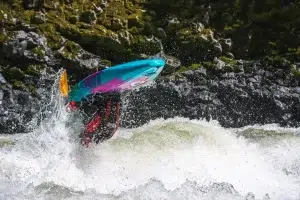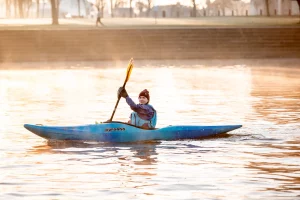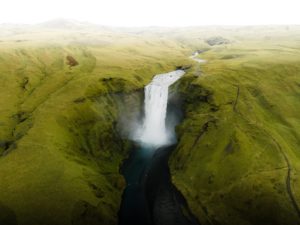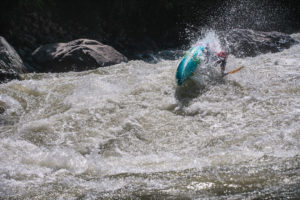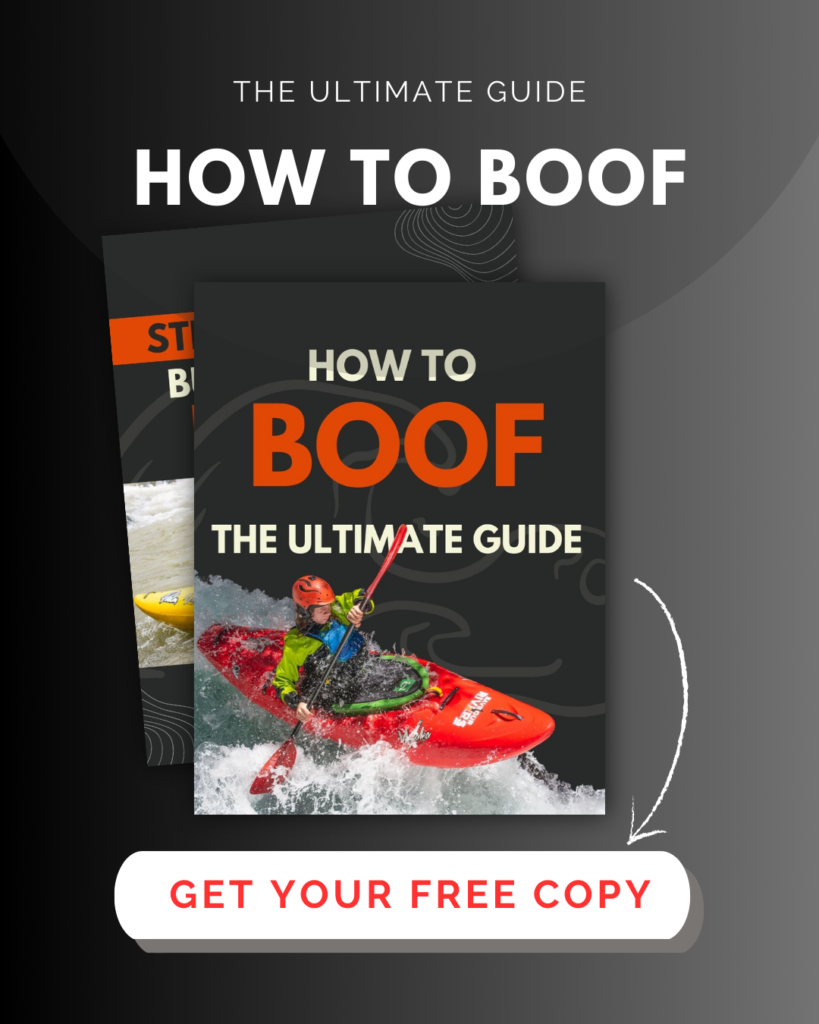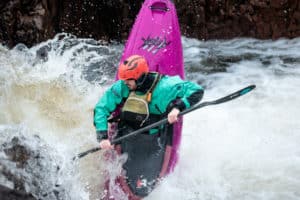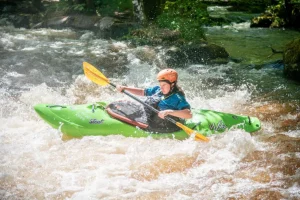Whether you’re a beginner or an experienced kayaker, learning how to perfect your forward paddle is one the most important skill to master in whitewater kayaking.
Nailing your forward paddling technique will allow you to move more efficiently through the water and will help you to improve all other aspects of your kayaking.
Those long flat water paddles, in between rapids, will start to feel easy and your boofs will become more natural and fluid.
The most stylish paddles all have one thing in common, they have perfected the forward stroke, linking each stroke to each move on the river – gracefully gliding from boof to boof.
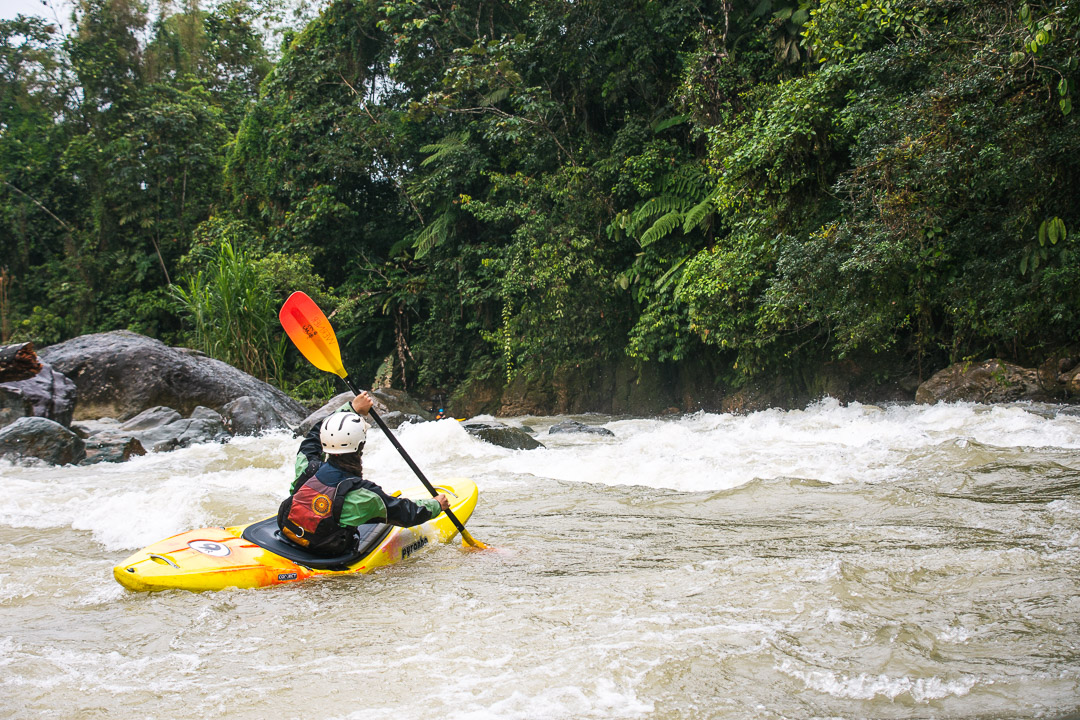
Step 1: Body Position
Sit up straight in your kayak with relaxed shoulders. Keep your feet in contact with the footrests for stability and power throughout the stroke.
By aligning your posture and distributing your weight evenly, you will be able to stay balanced and generate power with each stroke.
New paddlers often have the bad habit of leaning back in their kayaks. The backrest is not meant to be like your couch at home, it’s not to be used as a pillow! The backrest’s role is more of a guide to help you sit upright and to keep contact with your boat to allow you to maintain control.
Step 2: Paddle grip
Hold the paddle with both hands, shoulder-width apart. If you place your hands on top of your head, your elbows should be at right angles.
Make sure that you are holding the paddle in the middle. Beginners make the mistake of holding their paddle more to one side than the other. This will hinder you as you are learning as you will have more leverage on one side than the other, sending you spinning in circles.
Maintain a firm grip on the paddle shaft, but try to keep your grip loose. You should be able to move your fingers freely, whilst gripping the shaft.
No white knuckles from gripping the paddle too hard!
If you grip too hard you will tire yourself out a lot sooner than if you stay loose. You will also find your whole body tensing up. Relax your grip and your body will follow suit.
Step 3: Engage your core muscles
Activate your core muscles, including your abdominal and lower back muscles, as you paddle.
This does not mean tense your abs! Your core is made up of a whole host of muscles around your midsection. You should be able to breathe freely as you engage your core, so don’t go holding your breath!
Engaging your core adds power to your strokes and improves stability. Think of your core as the central force that drives your paddle strokes.
You can see the benefits of the core by sitting on the floor and asking a friend to push you. If you keep your core relaxed you will quickly find yourself face down in the grass. If you tense your core, however, you will be able to stay in control and upright….
Handy when you’re in a kayak… right?
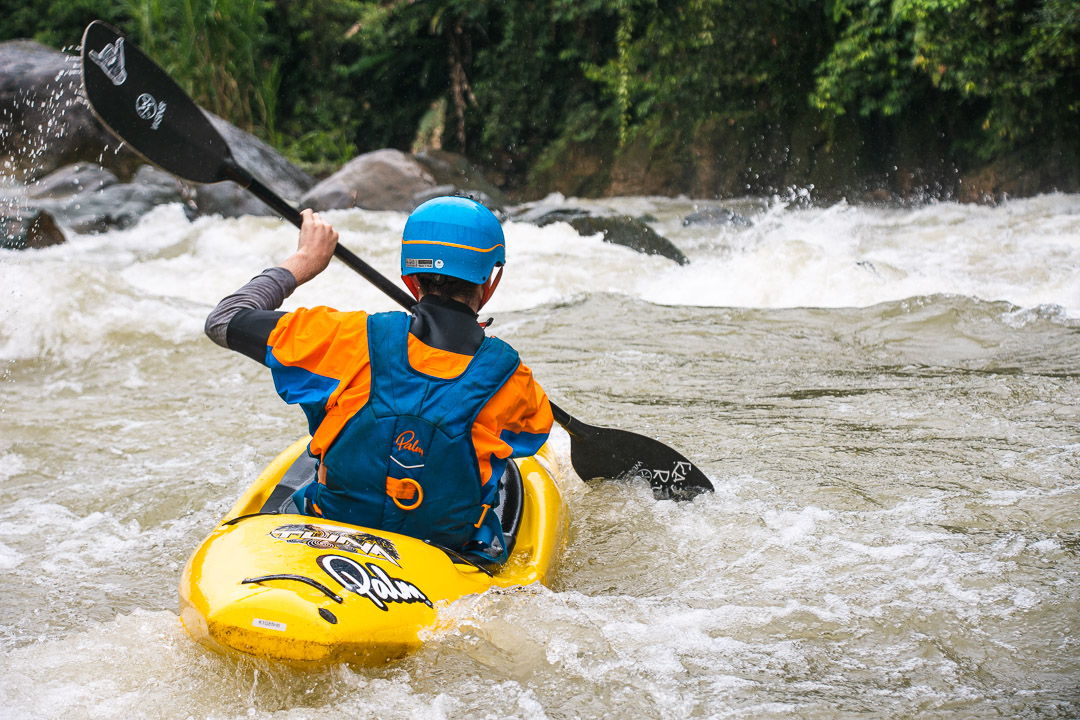
Step 4: Start the stroke with a proper catch and entry:
Begin each stroke by placing the paddle in the water near your feet. Avoid reaching too far forward or placing the paddle too close to the kayak.
The ‘catch’ is the first part of the stoke, where the paddle first connects with the water.
This is an important part to master as you can waste a lot of efficiency by not optimising the first part of the stroke.
As the paddle enters into the water, you do not want to yank it through or you will waste your energy. On the other hand, you do not want to be leaving the paddle to float with the speed of the boat.
Build power through the stroke by building pressure in the first few inches of the catch.
Step 5: Generate power through the drive phase:
Pull the paddle towards your body using your core, back, and arms. Imagine driving the blade through the water as you engage these muscle groups.
Keep your lower (pulling) arm relatively straight as you twist from the hips, pushing away with your feet (on the same side of your stroke). This will make sure that you are using your larger muscles for most of the stroke, rather than your smaller muscles like your arms.
As you pull with your lower arm, push with your top hand and shoulder. This will rotate you from your core.
As your paddle gets to around your knees, finish the stroke by bending your arms and pulling through. Your paddle blade should leave the water by around your hips.
Apply consistent pressure throughout the drive phase to maximize your forward propulsion.
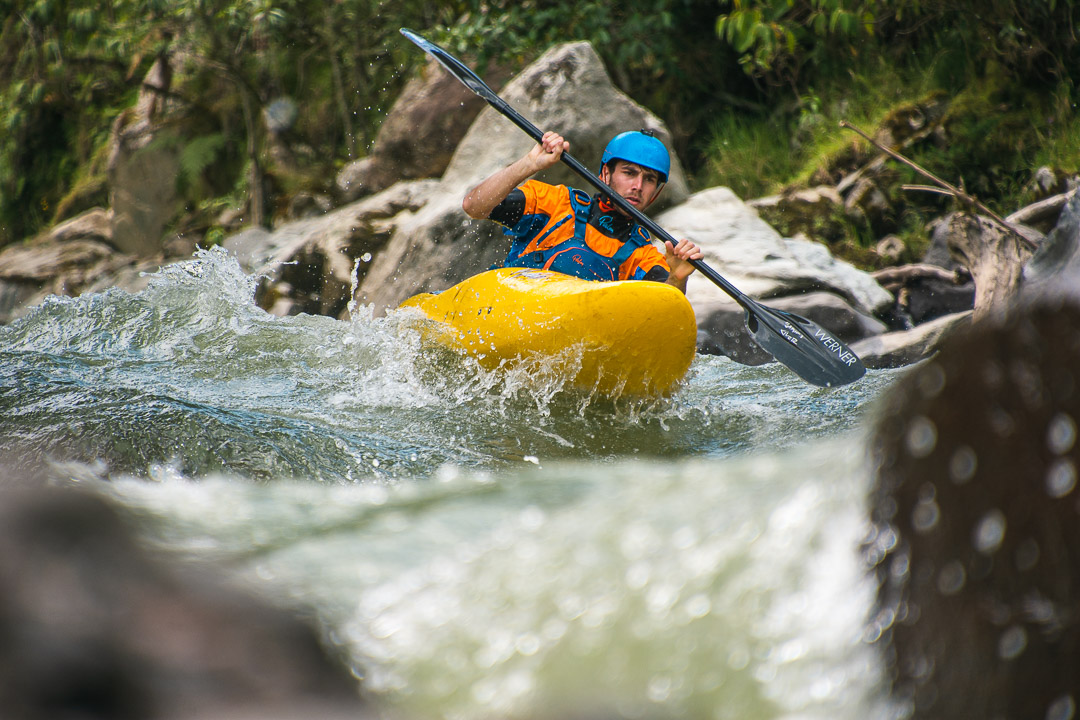
Step 6: Maintain a smooth recovery phase:
As you complete the drive phase, smoothly lift the paddle out of the water. Minimize splashing and unnecessary movements during the recovery phase. The paddle should glide above the water’s surface in a controlled manner, preparing for the next stroke.
Feather your paddle, by twisting your dominant wrist so that your opposite paddle is now ready to enter the water perpendicular to the boat.
Step 7: Find your rhythm and timing:
Developing a consistent rhythm and timing is key to efficient forward paddling. Experiment with different stroke cadences and find a pace that feels natural to you.
Sync your strokes with the flow of the water, allowing for a smooth and fluid paddle.
Step 8: Identify and correct common mistakes:
There are lots of mistakes that beginners and experienced paddlers alike make when paddling.
Keep an eye out for some of them listed below:
- Leaning too far back
- Using too much of your arms
- Not engaging your core.
- Overreaching
- Not having your paddle vertical enough
- Tensing up too much
You can record yourself, or get a friend too to help you analyse your paddling technique.
Seek feedback from experienced paddlers and invest in some coaching to help you to nail the basics.
Step 9: Boost performance through conditioning and fitness:
Keeping your fitness up is a great way to improve your forward paddle. Keeping the body fit and strong will stop you from falling back into bad habits and allow you to focus on the technique, rather than trying to catch your breath.
Cross-training activities like swimming, cycling, or yoga can improve your overall fitness level and flexibility.
Whilst cross-training is great – nothing beats more time on the water. Check this article out to learn how to improve your paddling through flatwater training.
Introducing strength training is another great way to improve your paddling. Focus on your back, shoulders and core if you are looking to improve your stroke.
For more tips and tricks, sent straight to your inbox each week – check out our Newsletter! Sign up here…
